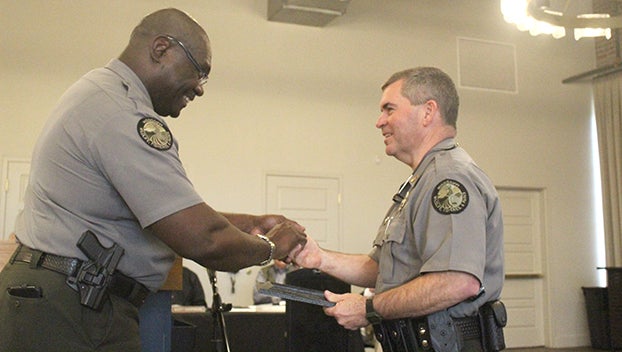Artifact show to travel to town
Published 7:01 am Sunday, April 5, 2015

Photo Submitted / Artifacts such as these will be displayed Saturday at the Native American Indian Artifact Show at the Lincoln Civic Center.
Have you ever wondered what life would be like without cellphones, televisions, computers, cars, interstate highways or even Walmart? What about convenience stores, movie theaters or shopping malls?
Prehistoric man had none of these things when he entered North America some 16,000 years ago from Asia. He crossed the Bering Strait by way of a natural land bridge into a land that he knew nothing about. He faced harsh climates and had to wander day by day in search of food and shelter.
The Native American Indian Artifact show at the Lincoln Civic Center on Saturday will give locals the opportunity to explore this history and see artifacts that will be on display. Attendees will be able to see how prehistoric man lived thousands of years ago and the tools and weapons he used to survive. All are welcome, and no admission will be charged.
Bill Breidinger, president of the Magnolia State Archaeological Society, said the first natives used either a rock shelter or cave or a crude hut made from animal hide and sticks. The food that he provided for his family usually came from massive animals such as mastodon or mammoth that outweighed him by as much as 10 tons. These animals were very dangerous and more often than not, family members or members of the hunting party were killed in pursuit of their prey. The tools and weapons that he used were made of stone or bone and were thin and narrow and attached to a long shaft. This allowed the spear or “lance”, when thrown, to penetrate deeply into these large animals.
The animal would usually be surrounded by several hunters, and it would take several spears to kill the animal.
They had to constantly move to follow the herds of game so there were no permanent dwellings. Paleo man probably moved to the midwestern part of the country because of the great abundance of game in that area. It has been said that there were at least a dozen types of large mammals here and that all land north of here was covered by the last stages of the Wisconsin glacier. This was the daily life of Paleo man.
This is just a small window into the past and much more is still to be learned. For those interested in more information about this time period much can be learned at the artifact show hosted by the Magnolia State Archaeological Society.
For more information call Bill Breidinger at 601-635-3222.





